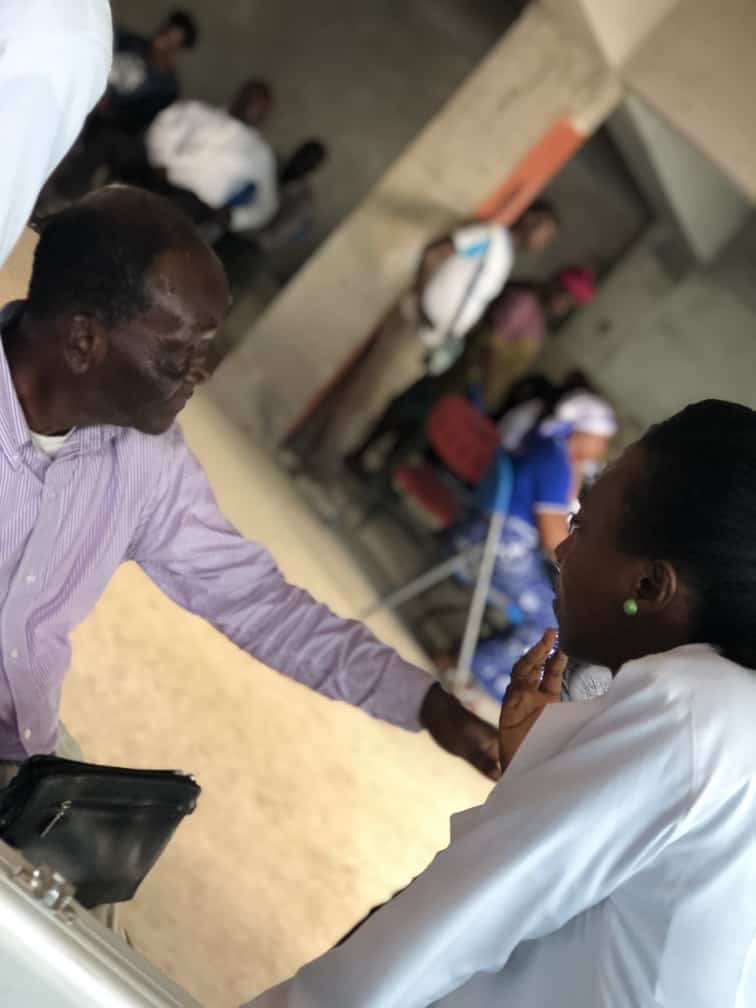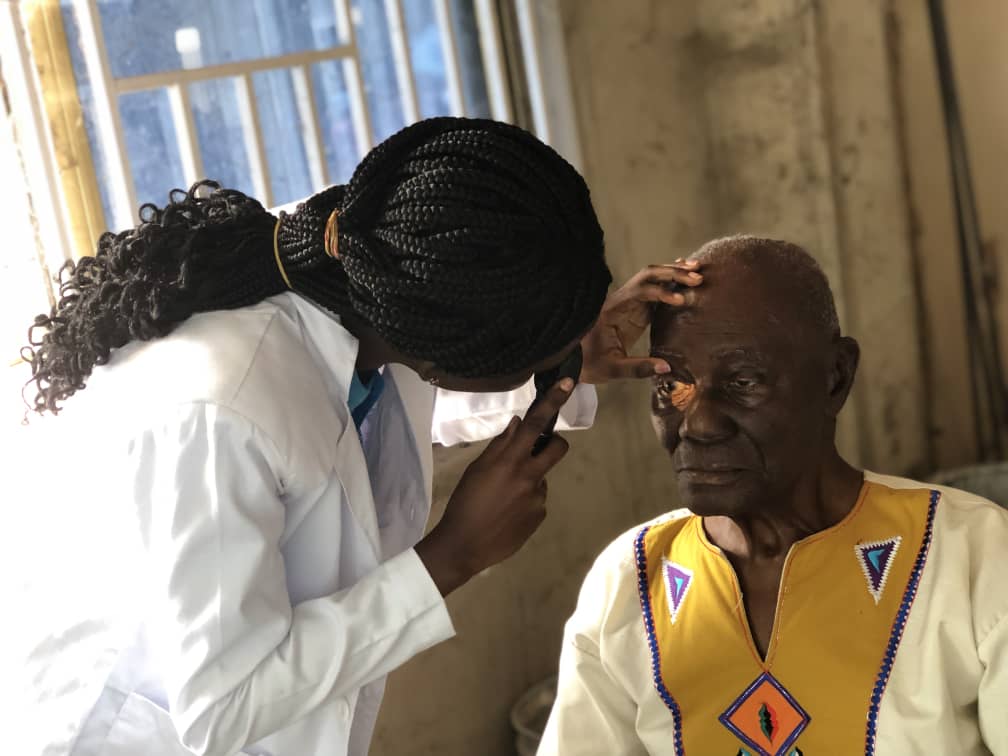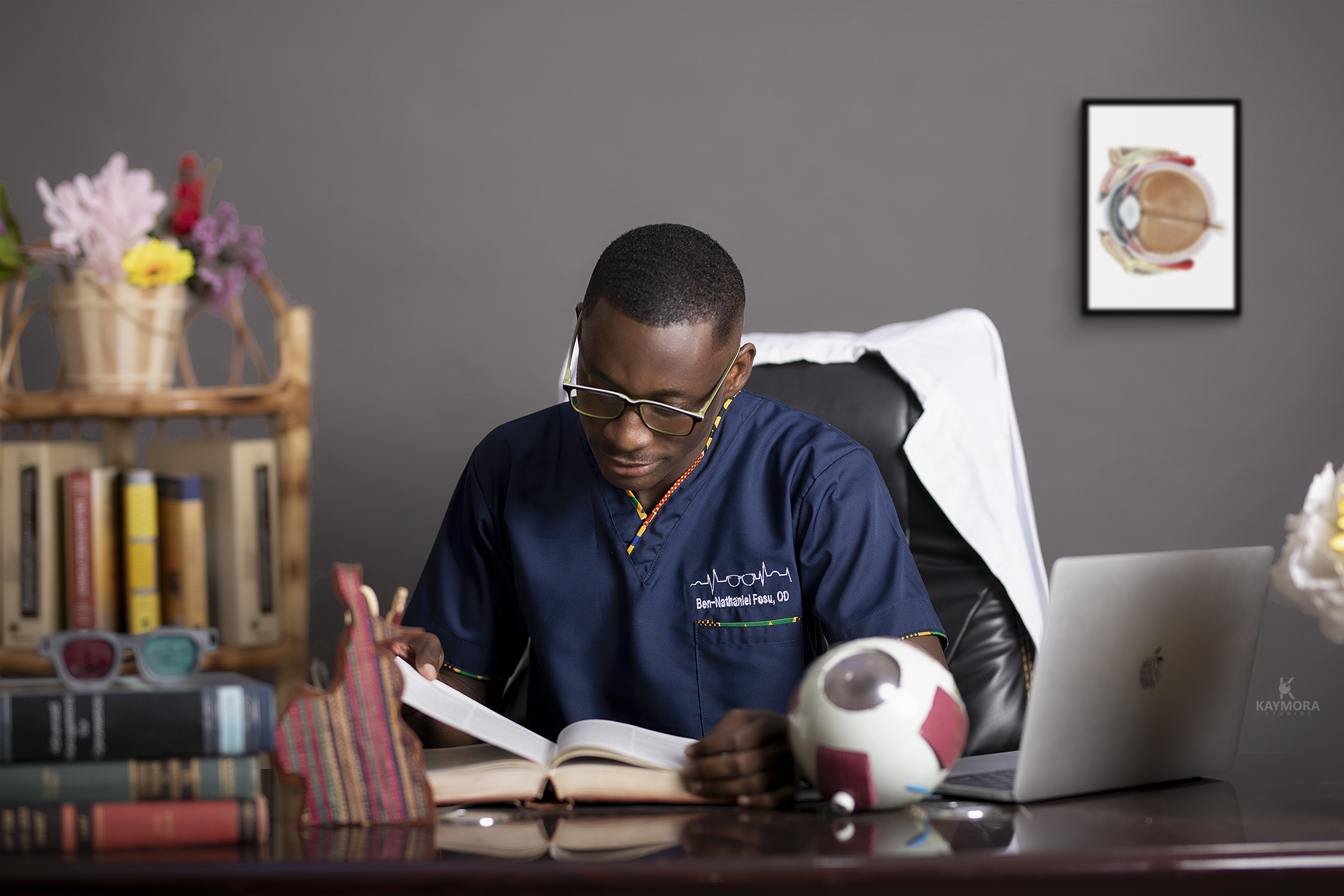February, Low Vision Awareness Month, A General Overview
Greetings to all and sundry,
All too soon the weekend has once again come to an end and we go again for another week, seeing to the ocular health concerns of our patients and propagating the good news about good health and the need to for us to make efforts on a daily. Well, thus my life as an Optometrist, what about you?

Anyway, i do hope that you enjoyed the weekend though and that you are doing very well. As we prepare for the week's hustle and bustle ahead, i wanted to draw your attention to the fact that February is actually Low Vision Awareness month. So for our discussion today i would be saying something about low vision so that we get to know what it is generally and the causes as well as what we can do for ourselves but as the month is dedicated to low vision, we may get to learn more as the days go by.
Introduction
The eyes ability to see tend to come in different ranges, there are those who can see very well without the need for any aids or glasses if you want to put it that way and then there are those who needs spectacles to be able to see to the optimal level. Then there are those whose vision cannot be proved any further due to amblyopia as we discussed previously and then there are the low vision individuals.
Let me not bore you with technicalities as defined by the World Health Organization where we look at the visual acuity assessments of the eyes but let's get it from the layman's perspective, i prefer that. And so irrespective of what the cause of your poor vision maybe when it gets to a certain point or rather cannot reach a certain point then we can classify you as having low vision the same way someone's glasses may have low to high refractive error.

Low vision individuals have may have had refraction procedure done incase of error, may have surgery done in the case of a pathology and medication applied however if at the end of all the best treatment their vision fails to reach a substantial amount then your Optometrist may classify you as being a low vision patient. Tod achieve the status of a low vision patient, your vision must that bad such that sometimes walking around becomes quite difficult without the help of another.
The issue with low vision is that there are many individuals living with low vision but ain't getting the needed aid they ought to receive because they hide in their closets and wouldn't come out for fear of been considered blind or rediculed. There are also those that would rather pretend that they see find and try to act tough for no apparent reason. All these things makes aiding individuals with low vision a difficult task.
Low Vision Life and Psychology
Now they say that identifying the problem is half the problem solved, similarly, for one to be able to get the best out of the remainder of their vision as a low vision patient or individual it starts with they accepting their situation and been amenable to receive support in their activities and way of life, being ready to learn and re-learn .
Low vision always has a cause, it is never an idiopathic condition, which is why taking care of your eyes is an important thing. Some causes of low vision include cataract (the situation where patient refuses or cannot afford surgery and vision continues to deteriorate to the level of low vision)j, retinopathies (in most cases of retinopathy not much can be done when it comes to vision anyway), macular degeneration, even refractive error etc.
Low vision doesn't mean blindness, and being a low vision patient doesn't necessarily make you helpless or unable to do the normal things you do, just that you may need some help or you may need things to be made easier in a particular way for you. In developed countries constructions take in account individuals with low vision and the blind such that land marks and important points allow a path may be made more colorful for easy notice. Writings may be made huge and conspicous so as to make it visible to the low vision individual

Do not hold back in seeing a specialist, there are Optometrist who specializes in low vision and their purpose like your primary care physician is to assist you and make life easier or better for you. Do not shy away, there are low vision aids may be given to you to enable you see a little better and make good use of your residual vision. Please note that when your are given these aids they won't perform magic for you but would let things be a bit better for you.
As a low vision patient or individual high illumination may be your friend, this would help you see better and make use of any cells that may be left or available to send impulses to the brain. When you loss a good amount of your vision and ends up in the low vision category irrespective of what the cause may be, please be gentle with yourself, allow yourself to mourn if need be. Most patients go through the stages of grieve until acceptance is achieved.
The most important thing i always say and would continue to say is that when in doubt consult your physician or in this case your Optometrist, do not wait on your symptoms to get worse before you come in, i am currently dealing with an emergency case of globe rupture for the eye which came in this weekend that i would be discussing with you soon and it would let you understand how important it is to come in as and when you experience discomfort.
Conclusion
Low Vision is not a blind sentence, if you take good care of yourself you can continue to use the rest of your vision throughout your life but you need to take the step today, visit your nearest eye care facility for an eye examination, if you cannot go alone which is mostly the case with low vision, do not be shy to ask your neighbor or friend for help. As i always say, it is better safe than sorry.

Be particular with what you put on your eye, herbal concussions and quacks have caused a lot of people their vision over the years and i certainly wouldn't want you to be a victim. And so be safe, avoid over the counter medication without examination and prescription and always remember that your sight is your light. Thanks for today and i wish you a fruitful week.
Further Reading
Legge, G. E., & Chung, S. T. L. (2016). Low Vision and Plasticity: Implications for Rehabilitation. Annual review of vision science, 2, 321–343. https://doi.org/10.1146/annurev-vision-111815-114344.
Altınbay, D., & İdil, Ş. A. (2019). Current Approaches to Low Vision (Re)Habilitation. Turkish journal of ophthalmology, 49(3), 154–163. https://doi.org/10.4274/tjo.galenos.2018.53325.
van Nispen, R. M., Virgili, G., Hoeben, M., Langelaan, M., Klevering, J., Keunen, J. E., & van Rens, G. H. (2020). Low vision rehabilitation for better quality of life in visually impaired adults. The Cochrane database of systematic reviews, 1(1), CD006543. https://doi.org/10.1002/14651858.CD006543.pub2.
John, D., Jacob, C., Paul, P., Abraham, L., & Kuriakose, T. (2021). Low vision device requirements among children from two schools for the blind in Tamil Nadu. Indian journal of ophthalmology, 69(1), 127–129. https://doi.org/10.4103/ijo.IJO_142_20
! I appreciate your detailed explanation of low vision and the importance of seeking help from a specialist. Your emphasis on the need for acceptance and self-care for individuals with low vision is spot on and will likely be valuable for those who may be struggling with their vision. I also appreciate your emphasis on the importance of early detection and treatment, as well as the role of high illumination and low vision aids in helping individuals with low vision. Thank you for educating us on this important topic.@nattybongo
It is always a pleasure to share what i know and help others do better when it comes to their ocular health and i am happy that you found the read useful. Thank you so much for your encouragement and support always, it is very much appreciated.
Congratulations @nattybongo! You have completed the following achievement on the Hive blockchain And have been rewarded with New badge(s)
You can view your badges on your board and compare yourself to others in the Ranking
If you no longer want to receive notifications, reply to this comment with the word
STOPCheck out our last posts:
Support the HiveBuzz project. Vote for our proposal!
We go again
Regards @nattibongo
Good week for you. What you share is important, having a vision problem is something that should be addressed as soon as possible, to prevent the problem from getting worse. Frequently people leave health, and especially prevention, until the last minute, later having bigger problems that become more difficult to attend to.
The same thing happens with vision, they tend to postpone attention too much. Partly because they adapt to seeing little, but also due to carelessness, on other occasions due to lack of knowledge and on others, because they do not have close advice, unfortunately.
Yes, it is quite sad and unfortunate when these happens, sometimes you wish patients could have come in just a little bit earlier or done things much better than they did but it may have already been too late.
It was a pleasure hearing from you again, how is work and life generally? I do hope you are having a good time and getting good rest too in between work?
I understand the point, sometimes people do not come in time, and it is already too late. But that's when you have to talk clearly with them, so that they know that usually all is not lost, and that you have to emphasize the good that remains, and that health involves many things.
Life in general, well, my friend, a little bumpy, but well. Taking care of myself, because we cannot be people who profess health and live with multiple ailments, but well in general, thanks for asking. I hope that for you this month will be very good and you can help many people.
You couldn’t have said it any better, Patients need patience to achieved the desired health results, as health professionals thus one of the important things we learn as part of our human relationship.
It is always good to hear from you and to read from you, life is indeed and a long ride, sometimes the road is smooth other times is bumpy, in all so long as we do not give up and keep going we end up with light at the end of the dark tunnel. I’m optimistic about the goodness that will come our way this month, I wish us many good things, thanks for passing by, stay safe and save lives
Thanks for your contribution to the STEMsocial community. Feel free to join us on discord to get to know the rest of us!
Please consider delegating to the @stemsocial account (85% of the curation rewards are returned).
Thanks for including @stemsocial as a beneficiary, which gives you stronger support.